Challenging the standard cosmological model
Scientific discussion meeting organised by Professor James Binney FRS, Dr Roya Mohayaee, Professor John Peacock FRS and Professor Subir Sarkar.
Is the universe simple enough to be adequately described by the standard ΛCDM cosmological model which assumes the isotropic and homogeneous Friedmann-Lemaître-Robertson-Walker metric? Tensions have emerged between the values of cosmological parameters estimated in different ways. Do these tensions signal that our model is too simple? Could a more sophisticated model account for the data without invoking a Cosmological Constant?
The schedule of talks and speaker biographies are available below. Speaker abstracts will be available closer to the meeting date. Meeting papers will be published in a future issue of Philosophical Transactions of the Royal Society A.
Poster session
There will be a poster session on Monday 15 April. Poster submissions are now closed.
Attending this event
In person registration has currently sold out, but you can still sign up for virtual participation using the above link. Please contact the Scientific Programmes team if you have any questions.
Organisers
Schedule
Chair
Professor John Ellis CBE FRS, King’s College London, UK
Professor John Ellis CBE FRS, King’s College London, UK
John Ellis currently holds the Clerk Maxwell Professorship of Theoretical Physics at King's College in London. After obtaining a PhD from Cambridge University and post-doctoral positions at SLAC and Caltech, from 1973 to 2011 he worked at CERN (Geneva). His researches on phenomenological aspects of elementary particle physics and its connections with astrophysics, cosmology and quantum gravity. Much of his work relates directly to experiment: interpreting results of searches for new particles and exploring the physics that could be done with future accelerators. A proposal he made in 1976 led to the discovery of the gluon in 1979, and he was one of the first to study how the Higgs boson could be produced and discovered. He is currently active in efforts to understand the Higgs particle discovered recently at CERN, and exploring extensions of the Standard Model such as supersymmetry and other possible new physics such as dark matter.
| 08:55-09:00 |
Welcome by the Royal Society and organisers
|
|---|---|
| 09:00-09:30 |
Status of the LCDM theory: supporting evidence and anomalies
The standard LCDM cosmology passes demanding tests that establish it as a remarkably good approximation to reality. It stands to be improved, however, and the tensions, or anomalies, in the LCDM theory might yield hints to finding a still better cosmology. I will offer thoughts about the anomalies, including an update of the evidence of large-scale sheet-like patterns in the space distributions of galaxies, clusters of galaxies, and quasars. 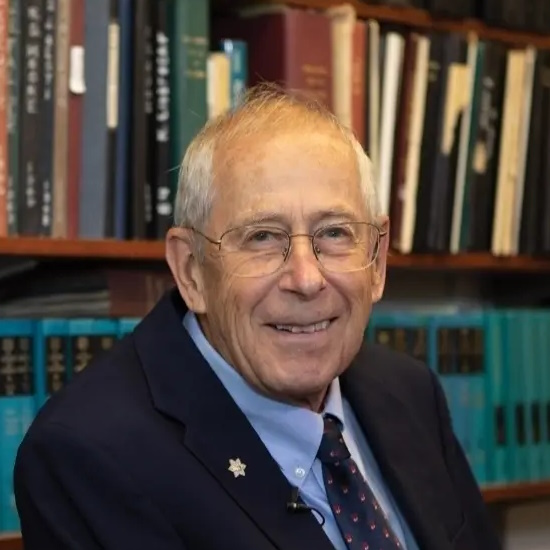
Professor Jim Peebles FRS, Princeton University, USA

Professor Jim Peebles FRS, Princeton University, USAProfessor Peebles received his BS from the University of Manitoba and his PhD from Princeton University. He held many positions at Princeton, culminating in 1984 when he was appointed Albert Einstein Professor of Science. Professor Peebles has received many prizes and awards, including the Eddington Medal of the Royal Astronomical Society (1981), the Gold Medal of the Royal Astronomical Society (1998), the Cosmology Prize of the Peter Gruber Foundation (2000) and the Nobel Prize in Physics (2019). Professor Peebles was elected a Fellow of the Royal Society in 1982, and also holds Fellowships of the National Academy of Sciences (USA) and the Royal Society of Canada. Professor Peebles has written several books including The Whole Truth (Princeton University Press, 2022). |
| 09:30-09:45 |
Discussion
|
| 09:45-10:15 |
Challenges to the Lambda CDM Cosmology
Observations of the cosmic microwave background (CMB) anisotropies provide strong evidence in support of the ΛCDM cosmology. Nevertheless, a number of 'tensions' have emerged. I will review: (a) recent results from the CMB that have strengthened the evidence in favour of ΛCDM; (b) why it is difficult to explain the discrepancy between the ΛCDM value of the Hubble constant, H0, and the value derived from the Cepheid distance scale; (c) why the interpretation of cosmic shear surveys may indicate a small-scale/large-scale mismatch rather than an inconsistency between early and late time physics; (d) why inflation, a cornerstone of the ΛCDM model, has introduced a new hierarchy problem in cosmology. 
Professor George Efstathiou FRS, University of Cambridge, UK

Professor George Efstathiou FRS, University of Cambridge, UKGeorge Efstathiou holds the Professor of Astrophysics (1909) at the University of Cambridge. He received his B.A. in Physics from Keble College, Oxford University in 1976, and his Ph.D. in Astronomy from Durham University in 1979. His first postdoctoral appointment was at the Department of Astronomy, University of California, Berkeley. He spent the next eight years at the Institute for Astronomy at Cambridge, beginning as a Postdoctoral Research Assistant and eventually becoming Assistant Director of Research. In 1988, Efstathiou was appointed to the Savilian Chair of Astronomy at Oxford University, where he served as Head of Astrophysics until 1994. He returned to Cambridge in 1997 and served as Director of the Institute of Astronomy until 2008 and was the first appointed Director of the Kavli Institute for Cosmology at Cambridge from 2008-2013. Professor Efstathiou has received several prizes for his research including the 1990 Maxwell Medal and Prize of the Institute of Physics, 1990 Vainu Bappu Prize of the Astronomical Society of India, 1994 Astrophysics Prize of the Bodossaki Foundation, 2005 American Institute of Physics Heineman Prize for Astronomy (shared with his long-term collaborator Simon White), 2011 Gruber Prize in Cosmology (shared with Carlos Frenk, Marc Davis and Simon White) and more recently the 2013 Nemitsas Prize in Physics. He was elected to the Royal Society in 1994. Professor Efstathiou has wide interests in theoretical and observational cosmology and has contributed to studies of large-scale structure in the Universe, galaxy formation, dark energy and the cosmic microwave background radiation. He is a member of the Science Team for the European Space Agency Planck Satellite, launched in May 2009, which is mapping the temperature and polarization anisotropies of the cosmic microwave background to unprecedented precision. |
| 10:15-10:30 |
Discussion
|
| 10:30-11:00 |
Break
|
| 11:00-11:30 |
New JWST Observations: What Do They Tell Us About the Hubble Tension?
Professor Freedman will describe new results from a major JWST program to improve measurements of the Hubble constant. The 10 times greater sensitivity and 4 times higher resolution of JWST in the near-infrared provide a powerful means of addressing challenges in previous measurements of the extragalactic distance scale. Distances to a sample of Type Ia supernova hosts have been measured using three independent astrophysical routes: 1) the Cepheid period-luminosity relation, 2) the Tip of the Red Giant Branch (TRGB) and 3) the luminosity function of JAGB/carbon stars. These three measurements provide a constraint on the systematic uncertainties in the distances that set the local calibration for the Hubble constant. As part of their analysis, their JWST photometry was blinded by adding random numbers to each of the photometric catalogues, which were then encrypted and not available to group members. The entire analysis was carried out in this blinded state until the relative distances were locked in, at which point the photometry was unblinded simultaneously for all three methods, and a value of Ho for each of the methods was computed. The implications for the Hubble tension will be presented. 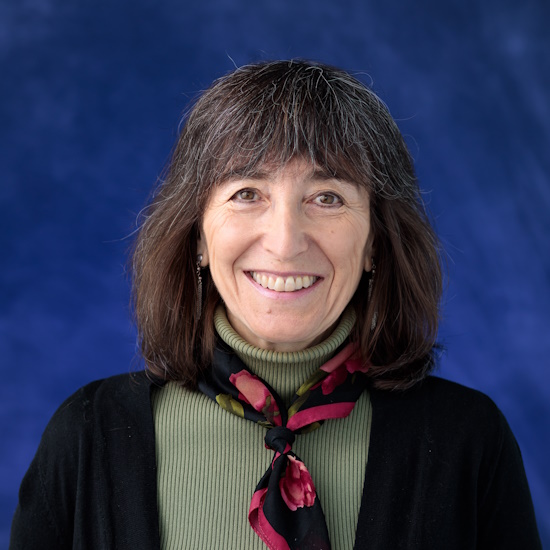
Professor Wendy Freedman FRS, University of Chicago, USA

Professor Wendy Freedman FRS, University of Chicago, USAWendy L Freedman is one of eleven named University Professors appointed by the President at the University of Chicago. Her research interests are in observational cosmology. She was a principal investigator for a team of thirty astronomers who carried out the Hubble Key Project to measure the current expansion rate of the Universe. Presently her research is directed at increasing the accuracy of the expansion rate measurement and testing whether there is new fundamental early-universe physics. Professor Freedman is an elected member of the National Academy of Sciences, the American Academy of Arts and Sciences and the American Philosophical Society; elected Fellow of the American Association for the Advancement of Science and the American Physical Society; and a Legacy Fellow of the American Astronomical Society. She is a recipient of many prizes including the American Philosophical Society's Magellanic Prize, the Dannie Heineman Prize for Astrophysics, and the Gruber Cosmology Prize. |
| 11:30-11:45 |
Discussion
|
| 11:45-12:15 |
Testing the cosmological model in the non-linear regime with weak lensing
Weak gravitational lensing provides an immense opportunity to test LCDM in the non-linear regime. Over the last decade, it has matured as a high-precision tool with on-going surveys like the Dark Energy Survey, which has imaged 5000 sq degrees and 100M galaxies. Intriguingly, weak lensing surveys have consistently reported a mild cosmological tension: low values of the clustering amplitude parameter (S_8) compared to that predicted by Planck primary Cosmic Microwave Background. Is this a hint of a tension between the early and late Universe, as typically presented, or between linear and non-linear scales? On the eve of Rubin Observatory’s Legacy Survey of Space and Time (LSST), which will measure weak lensing with billions of galaxies, I will present new approaches to exploit these data and test the scale-dependence of the cosmological model. 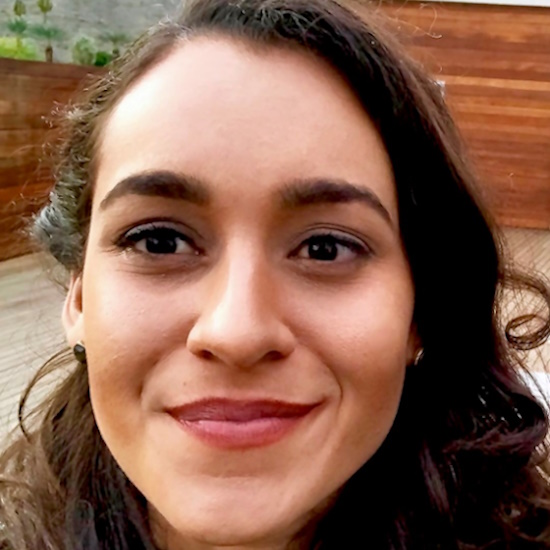
Professor Alexandra Amon, Princeton University, USA

Professor Alexandra Amon, Princeton University, USAProfessor Alexandra Amon, based at Princeton University, is primarily interested in understanding the evolution and composition of the Universe, including its dark components. She is an expert in weak lensing, working very closely with data and has a keen interest in the intersection with large-scale structure surveys. She co-leads the weak lensing team in the Dark Energy Survey (DES) and is focused on developing techniques further for the upcoming Rubin Observatory LSST. She has previously held postdoctoral fellowships at Cambridge University and Stanford University, and obtained her PhD from the University of Edinburgh. She has won both the Royal Astronomical Society’s Pension Thesis Award (2018) and the Winton Early Career Award (2023). |
| 12:15-12:30 |
Discussion
|
Chair
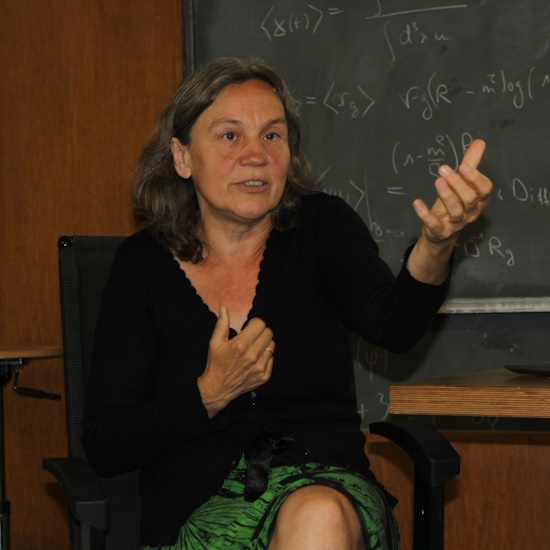
Dr Ruth Durrer, University of Geneva, Switzerland

Dr Ruth Durrer, University of Geneva, Switzerland
Ruth Durrer is head of the Department of Theoretical Pysics at Geneva University. Her research covers different areas in cosmology: inflation and the early universe, the cosmic microwave background, cosmological magnetic fields, gravitational waves and dark energy. She has obtained her PhD from Zurich University in 1988 and spent her post-doc years in Cambridge (UK) and Princeton (USA). Since 1995 she is full professor at the University of Geneva.
| 13:30-14:00 |
Do we understand the growth of structure over cosmic time? A CMB Lensing story
The standard LCDM model fit to CMB observations offers a precise prediction for the growth of structure over the 13.8 billion year history of the universe. Direct measurements of structure from galaxy surveys however do not seem to be perfectly concordant with this prediction. I will present a new mass map from the Atacama Cosmology Telescope (ACT) that uses lensing of the CMB itself to test cosmic concordance of structure growth over 9 billion years. I will also review how recent and ongoing cross-correlations using this mass map sketch a path towards disentangling new physics and astrophysical systematics. 
Professor Mathew Madhavacheril, University of Pennsylvania, USA

Professor Mathew Madhavacheril, University of Pennsylvania, USAMathew Madhavacheril is a faculty member at the University of Pennsylvania whose primary interests are in understanding the initial conditions, evolution and composition of the universe as a whole, including its Dark components and neutrinos. He works very closely with data and has a keen interest in developing principled approaches to statistical analysis of data from cosmic microwave background (CMB) and large-scale structure surveys. These days, together with his collaborators, he spends a good fraction of his time analysing and extracting science from the Atacama Cosmology Telescope (ACT) using pipelines being built for the upcoming Simons Observatory. He has previously held postdoctoral appointments at the Perimeter Institute and Princeton University, and obtained his PhD from Stony Brook University. |
|---|---|
| 14:00-14:15 |
Discussion
|
| 14:15-14:45 |
The ISW puzzle
The Integrated Sachs-Wolfe (ISW) effect from stacking Cosmic Microwave Background (CMB) images of superclusters and voids persists as a challenge to the concordance LambdaCDM paradigms. Stacking large and deep voids produces a signal 4-5 times the expectation. While the density of superstructures has limited the significance of the ISW tension compared to the Hubble or the S8/lensing-is-low tensions, its existence suggests a late-time alteration to the expansion history. The CMB Cold Spot, the most significant anomaly, resulted in the discovery of the Eridanus Supervoid, one of the most enormous known structures. Bayesian statistics and a later DES analysis suggest it is responsible for the Cold Spot, assuming a four times larger amplitude than the standard LambdaCDM prediction. We have proposed the AvERA model that tracks coarse-grained inhomogeneities of the matter distribution in an N-body simulation. The AvERA expansion history provides a "late solution" to the Hubble-constant tension with emerging curvature taking the role of Dark Energy, is consistent with all principal CMB and large-scale structure measurements, and solves the ISW puzzle. In addition, it predicts a sign reversal of the ISW effect that has been recently confirmed, albeit at a moderate significance, with eBOSS quasars. Deep and wide galaxy surveys, such as Euclid, will soon confirm or refute the sign reversal of the ISW effect, increase the overall statistical significance of the findings, and settle whether the ISW puzzle necessitates any significant modification to the concordance LambdaCDM paradigm. 
Professor István Szapudi, University of Hawai‘i, USA

Professor István Szapudi, University of Hawai‘i, USAIstván Szapudi is a theoretical cosmologist at the Institute for Astronomy, University of Hawaii, who explores the mysteries of the universe using statistics, simulations, and observations. He studies how the patterns of temperature and density fluctuations in the early and present universe reveal the nature of dark matter, dark energy, and inflation. He is also interested in the anomalous correlation between the cosmic microwave background and the distribution of galaxies, which challenges the standard cosmological model. His paper that discovered the largest void in the universe, the likely cause of the Cold Spot on the cosmic microwave background, was featured on the cover of Scientific American in 2015. He has published on various topics, including applied mathematics, computer science and machine learning, general relativity, geoengineering, economics, and epidemiology. He recently proposed a tethered sun shield near the L1 Lagrange point to mitigate the effects of climate change. |
| 14:45-15:00 |
Discussion
|
| 15:00-15:30 |
Break
|
| 15:30-16:00 |
The Ellis-Baldwin test
The standard cosmological model LCDM is described by the Friedman-Lemaitre-Robertson-Walker metric, which requires that the universe be isotropic and homogeneous on large scales, an assumption called the Cosmological Principle. If this assumption is accurate, then the dipole anisotropy observed in the Cosmic Microwave Background (CMB) should be due to our motion with respect to large-scale structure, which can be tested by measuring the corresponding dipole predicted in counts of cosmologically distant sources. This consistency test, first suggested in 1984 by Ellis & Baldwin, became possible in the 21st century with the advent of large catalogues of radio sources and quasars. I this talk, I will review the key observational results of the Ellis-Baldwin test, which have revealed a significant disagreement with predictions, challenging a foundational assumption of modern cosmology. 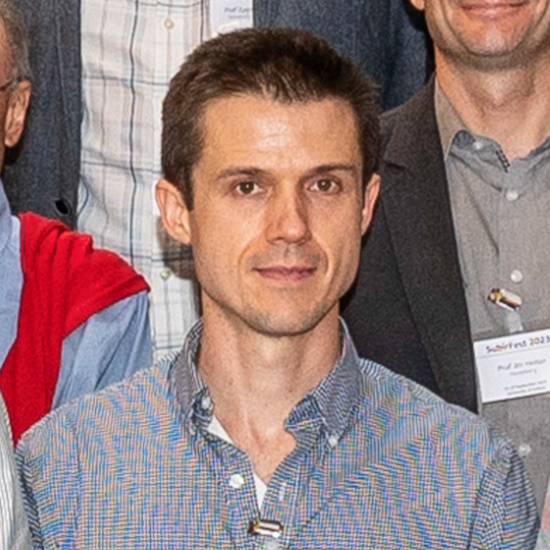
Nathan Secrest, US Naval Observatory, USA

Nathan Secrest, US Naval Observatory, USANathan Secrest is an astronomer at the U.S. Naval Observatory in Washington, DC, where he works on the link between the Gaia celestial reference frame and the ICRF. His research background is mainly extragalactic astronomy, with an emphasis on active galactic nuclei and their relationship with their host galaxies. An observationalist, he specializes in multi-wavelength, time domain, and astrometric data from the radio through hard X-rays, as well as employing statistical methods on large catalogues. With his colleagues at Oxford and TIFR, he has also contributed to observational cosmology, focusing on consistency tests of the cosmological principle using large radio galaxy and quasar catalogues. |
| 16:00-16:15 |
Discussion
|
| 16:15-16:45 |
The Cosmological Principle and the kinematic dipole
The Cosmological Principle is part of the foundation that underpins the standard model of the Universe. In the era of precision cosmology, when stress tests of the standard model are uncovering various tensions and possible anomalies, it is critical to check the viability of this principle. I will discuss various ways we can test this principle in a model independent way, and focus on a key test which is the consistency between the kinematic dipoles of the cosmic microwave background and of the large-scale matter distribution. Results using radio continuum and quasar samples indicate a rough agreement in the directions of the two dipoles, but a larger than expected amplitude of the matter dipole. The resulting tension with the radiation dipole has been estimated at ∼5σ for some cases, suggesting a potential new cosmological tension and a possible violation of the CP. However, the standard formalism for predicting the dipole in the two-dimensional projection of sources overlooks possible evolution effects in the luminosity function. In fact, radial information from the luminosity function is necessary for a correct projection of the three-dimensional source distribution. Using a variety of current models of the quasar luminosity function, we show that neglecting redshift evolution can significantly overestimate the relative velocity amplitude. While the models we investigate are consistent with each other and with current data, the dipole derived from these, which depends on derivatives of the luminosity function, can disagree by more than 3σ. This theoretical systematic bias needs to be resolved before robust conclusions can be made about a new cosmic tension. 
Professor Chris Clarkson, Queen Mary University of London, UK

Professor Chris Clarkson, Queen Mary University of London, UKProfessor Clarkson is a cosmologist, concentrating mainly on large-scale structure in the universe. They study how to observe signatures of general relativity on large scales. Other things they look at are constraining curvature, dark energy, and modifications to general relativity in different ways. They also consider constraints on homogeneity and isotropy which tests the Copernican Principle. Professor Clarkson is currently a Reader in Cosmology, a position they started in 2016. Before this, they were an Associate Professor at the University of Cape Town in the Department of Mathematics and Applied Mathematics where they retain an Adjunct position. They are also a visiting Extraordinary Professor at the University of the Western Cape, also in Cape Town. Professor Clarkson completed their PhD in 1999 at the University of Glasgow, and they did postdocs at Dalhousie University in Canada, and the University of Cape Town. They were also a lecturer at the Institute of Cosmology and Gravitation, University of Portsmouth. |
| 16:45-17:00 |
Discussion
|
Chair
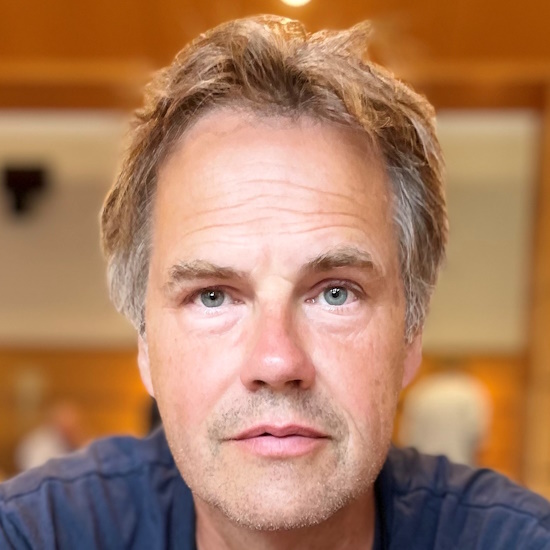
Professor Pedro Ferreira, University of Oxford, UK

Professor Pedro Ferreira, University of Oxford, UK
Pedro G Ferreira is a Professor of Astrophysics in the Physics Department of the University of Oxford and a Director of the Beecroft Institute of Particle Astrophysics and Cosmology.
His main field of expertise is cosmology, in particular the early universe and the large scale structure of the universe with a focus on trying to extract information about fundamental physics from these data sets. This has led him to explore how one might test and constrain General Relativity on large scales. Recently he has become interested in black holes, gravitational waves and, inevitably, he has also developed an interest in machine learning with a particular focus on methods for inferring physical laws or equations using symbolic regression.
| 09:00-09:30 |
Investigating ultra-large large-scale structures: potential implications for cosmology
Large-scale structures (LSSs) are often mapped with faint galaxies in the near-redshift Universe or very luminous objects in the distant-redshift Universe. I present a novel method of mapping LSS of faint matter at intermediate redshifts, interpreted from the MgII absorption doublets present in the spectra of background quasars. An important advantage of this MgII method is its precise spectroscopic redshifts, which might then allow for the discovery of intriguing features that could otherwise be blurred beyond detection with other methods. 
Alexia Lopez, University of Central Lancashire, UK

Alexia Lopez, University of Central Lancashire, UKAlexia Lopez is a PhD student in the Jeremiah Horrocks Institute of the University of Central Lancashire. She is working on the largest of the large-scale structures (LSSs) in the universe, using a new approach of intervening MgII absorbers in the spectra of quasars. Early in her career, Alexia made headlines with her discovery of 'A Giant Arc on the Sky', which she presented at the 238th meeting of the American Astronomical Society and at a press conference there. Currently, Alexia is working on her second, and comparably striking, LSS discovery: 'A Big Ring on the Sky'. Both ultra-large LSSs reside in the same cosmological neighbourhood (presumably no simple coincidence) and lead to questions concerning how such large structures could form at relatively early times and about the validity of the assumed Cosmological Principle. Alexia will discuss these intriguing LSS discoveries and the questions that then arise for cosmology. |
|---|---|
| 09:30-09:45 |
Discussion
|
| 09:45-10:15 |
Probing the isotropy of the local Universe with galaxy clusters
The isotropy of cosmic expansion and the dissipation of bulk flows at >150 Mpc scales are crucial assumption of LCDM; as such, they should be scrutinized observationally. Multiwavelength scaling relations of galaxy clusters are a powerful tool to test the isotropy of the local Universe in numerous independent ways since these relations strongly depend on cosmological assumptions. Using 540 clusters with X-ray, infrared, and Sunyaev-Zeldovich data we construct and utilize 10 scaling relations to robustly detect an apparent 9% angular variation of the Hubble constant (H0) at a 5 sigma level. This anomaly is consistently found in independent cluster samples and multiwavelength scaling relations, and it cannot be alleviated by an exhaustive list of possible systematic biases. The apparent local H0 anisotropy could be alternatively attributed to a 900±200 km/s cluster bulk flow extending up to 500 Mpc. Both of these scenarios strongly contradict LCDM in the local Universe. New scaling relations with higher precision and newly acquired X-ray and optical cluster data confirm the previous findings. Moreover, they suggest that the observed H0 anisotropy mostly emerges from within <800 Mpc. Furthermore, we use the 1st eROSITA cluster catalog, the largest X-ray cluster catalog ever constructed, to test the angular variation of H0. Interestingly, a preliminary analysis of the catalog independently supports the existence of a cosmic anisotropy within 800 Mpc. Finally, we use state-of-the-art cosmological, hydrodynamical simulations to better understand the rarity of the observed H0 variation within simulated LCDM universes. 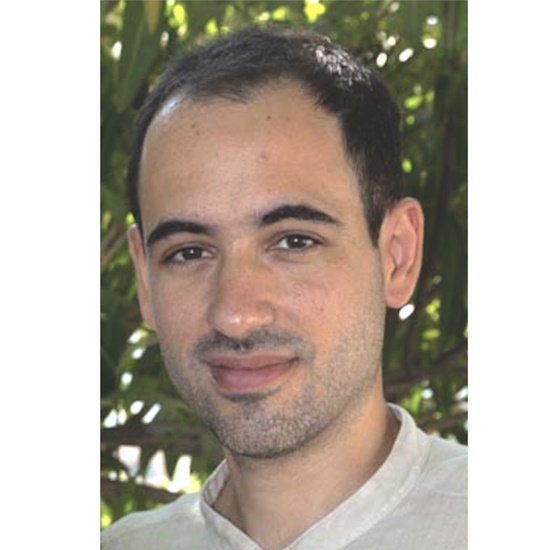
Dr Konstantinos Migkas, Leiden University, The Netherlands

Dr Konstantinos Migkas, Leiden University, The NetherlandsKonstantinos Migkas is currently an Oort postdoctoral fellow at Leiden Observatory, Leiden University, the Netherlands. He focuses on testing cosmic isotropy with galaxy clusters, the absolute distance calibration of clusters, their peculiar velocity fields, and cluster physics studies. Previously, Konstantinos was a postdoctoral researcher at the Argelander Institute for Astronomy, University of Bonn, Germany. There, he worked on the X-ray emission originating from cosmic filaments and studies of distant cluster mergers. He obtained his PhD in Astrophysics by the University of Bonn, Germany, in 2021. He is the pioneer of studying cosmic isotropy with galaxy cluster scaling relations, which was the focal point of his doctoral studies. His work has been extensively covered by the media, while for this work, Konstantinos received the prize for the best PhD thesis in Physics and Astronomy by the University of Bonn. |
| 10:15-10:30 |
Discussion
|
| 10:30-11:00 |
Break
|
| 11:00-11:30 |
Challenges to the standard cosmological model from large-scale bulk flow estimates
The Cosmological Principle demands that the motions of galaxies averaged over a large enough sphere should become small. Thus, the Large-Scale Bulk Flow is an important test of this principle and of the Standard Cosmological Model more generally. While hints of anomalous Bulk Flows have been reported for decades, in the past few years the quality and quantity of peculiar velocity data has improved to where Bulk Flows can put meaningful constraints on our models. We present estimates of the Bulk Flow in volumes of increasing radii using the minimum variance method with data from the CosmicFlows4 catalogue. Contrary to expectations, we find that the Bulk Flow amplitude increases with increasing radius, with the Bulk Flow amplitude in a volume of radius 200$h^{−1}$Mpc being large enough to have only a 0.003% chance of occurring in the Standard Model. We discuss the detailed characteristics of the Large-Scale Bulk Flow with an eye to better understand its origin. 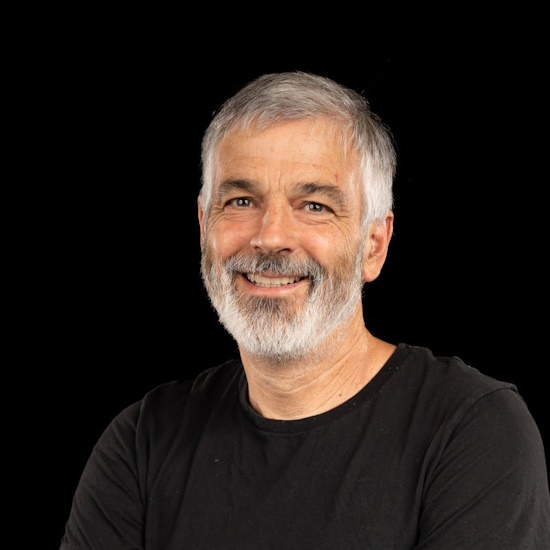
Professor Richard Watkins, Willamette University, USA

Professor Richard Watkins, Willamette University, USARichard Watkins is an American physicist specializing in cosmology and astrophysics. The primary focus of his research is developing methods for using peculiar velocity data to test the standard model of cosmology. He received his PhD from the University of California, Santa Barbara in 1989 and has held positions at the University of Chicago, the University of Michigan, Dartmouth College, and Reed College. He has taught at Willamette University in Salem, Oregon for over two decades. |
| 11:30-11:45 |
Discussion
|
| 11:45-12:15 |
Do supernovae indicate an accelerating Universe?
The lightcurves of Type Ia supernovae have been analysed assuming that they are standardisable candles, leading to the conclusion that the expansion rate of the Universe is accelerating. While the original claims in the 1990s were made using only around 100 supernovae, observations of over 2000 supernovae are now available. Meanwhile the usual practice of analysing data in the Cosmic Rest Frame (in which the Universe is presumed to be isotropic) has been challenged by the absence of convergence to this frame in the local peculiar velocity field, as well as the radio/quasar dipole anomaly. We analyse the new supernova datasets and find that the acceleration of the expansion rate is unequivocally anisotropic in our (heliocentric) frame of reference. Thus, it cannot be due to a Cosmological Constant but may be a general relativistic effect due to our local bulk flow. 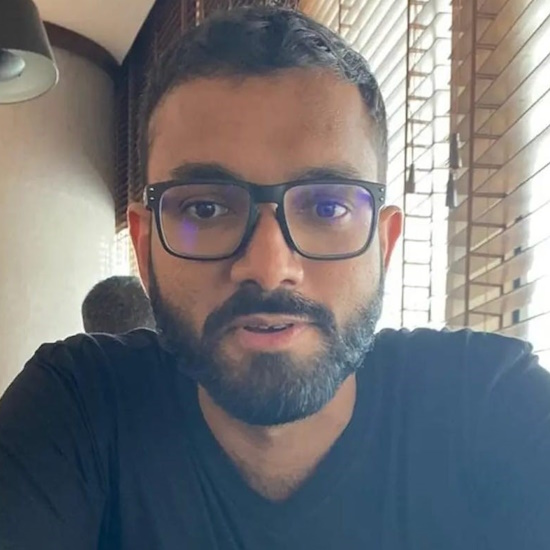
Dr Mohamed Rameez, Tata Institute for Fundamental Research, Mumbai, India

Dr Mohamed Rameez, Tata Institute for Fundamental Research, Mumbai, IndiaRameez did his PhD at the University of Geneva, Switzerland looking for Dark Matter and astrophysical neutrinos with the IceCube neutrino observatory, as well as exploring the phenomenology of minimal extensions of the standard model of particle physics for Dark Matter. For this work, he was awarded the CHIPP prize. Subsequently he joined the Niels Bohr Institute in Copenhagen as a PostDoc, where he contributed to the IceCube real time alert system and the birth of real time multimessenger astronomy. Meanwhile he also got interested in testing the cosmological principle, and how the peculiarities of the local Universe can be reconciled with it. Presently he is a Reader in the Department of High Energy Physics at the Tata Institute of Fundamental Research in Mumbai, where he continues to work on astroparticle physics and cosmology with the GRAPES-3 cosmic ray experiment and the Vera Rubin observatory, while trying to build an Indian participation in the future IceCube-Gen2 experiment. |
| 12:15-12:30 |
Discussion
|
Chair
Professor Joseph Silk FRS, University of Oxford, UK, Institut Astrophysique de Paris, France and Johns Hopkins University, USA
Professor Joseph Silk FRS, University of Oxford, UK, Institut Astrophysique de Paris, France and Johns Hopkins University, USA
The Silk mass and the Silk–Rees–Ostriker fragmentation condition set basic elements of the physics of the formation of galaxies in the hot expanding Universe. The analyses by Joseph Silk and his group show how galaxy formation is related to the angular fluctuations in the temperature of the thermal cosmic background radiation, the intergalactic clouds of atomic hydrogen, and the plasma in rich clusters of galaxies. Stars are essential parts of galaxies; Joseph has been the leading advocate of the incorporation of empirical knowledge of star formation into cosmogony. These systematic studies by Joseph have played an important part in bringing us to our present tightly constrained picture of how galaxies formed.
| 13:30-14:00 |
S-matrix constraints on dark energy (online talk)
The speaker will discuss constraints imposed on cosmology by the S-matrix formulation of quantum gravity. By consistency, this formulation eliminates any eternally inflating de Sitter landscape, thereby, excluding the cosmological constant from the energy budget of our Universe and restricting the nature of dark energy. Absence of a de Sitter landscape has profound implications for other fundamental puzzles, such as the strong-CP problem, making the existence of an axion mandatory. 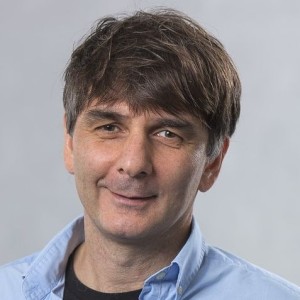
Professor Gia Dvali, Ludwig Maximilian University and Max Planck Institute, Munich

Professor Gia Dvali, Ludwig Maximilian University and Max Planck Institute, MunichProfessor Dvali received his PhD in 1992 at Tbilisi State University, is Director at Max Planck Institute for Physics 2009-present, and is a Humboldt professor at LMU Munich since 2010. They work in elementary particle physics, gravity and cosmology. |
|---|---|
| 14:00-14:15 |
Discussion
|
| 14:15-14:45 |
Reflecting the Universe in a mirror
Observations of the Cosmic Microwave Background (CMB) have cemented the notion that the large-scale Universe is both homogeneous and isotropic, i.e. it is invariant under translations and rotations. But is it invariant also under (point) reflections? Recent observations have challenged this paradigm, giving tentative evidence for new parity-violating processes at work in the Universe. In this talk, I will discuss the two key measurements: the polarization rotation of the CMB (“cosmic birefringence”) and the asymmetric distribution of galaxy tetrahedra. Whilst such exciting results necessitate careful scrutiny, the potential implications for new physics are intriguing. Birefringence could indicate axion-like interactions in the late Universe, whilst the galaxy detection may imply parity-breaking physics occurring in inflation. Focussing on the galaxy distribution, I will assess the feasibility of novel primordial phenomena alongside more banal resolutions such as systematic errors. To solve this cosmic conundrum, we require additional information: I will discuss new measurements of inflationary parity-violation from the CMB temperature and polarization, as well as improved numerical calibration with simulations. Whilst systematics may prove to be the most likely cause of these tensions, the parity-violating sector nevertheless represents an intriguing new dataset with which to probe the early and late Universe. 
Dr Oliver HE Philcox, Columbia University and Simons Foundation, USA

Dr Oliver HE Philcox, Columbia University and Simons Foundation, USAOliver Philcox is a postdoctoral fellow at Columbia University and a Junior Fellow in the Simons Society of Fellows. In 2022, he completed his PhD at the Department of Astrophysical Sciences at Princeton University, working with Professor David Spergel and Professor Matias Zaldarriaga. Before joining Princeton, Philcox earned Bachelor’s and Master’s degrees in Astrophysics at the University of Cambridge, after which he spent a year at Harvard University, as a Herchel Smith Scholar. Oliver's research broadly focuses on theoretical and observational cosmology, particularly as applied to galaxy surveys and the cosmic microwave background. He was awarded the 2024 New Horizons prize for his research on using analytic techniques to extract fundamental cosmological information from current and future galaxy surveys. |
| 14:45-15:00 |
Discussion
|
| 15:00-15:30 |
Break
|
| 15:30-16:00 |
Future directions in cosmology
Cosmology is entering a very exciting time in its history, when a wealth of state-of-the-art experiments are all starting to collect data, or about to. These experiments aim at addressing some of the most intriguing questions in fundamental physics, such as what is the nature of dark matter, is dark energy a cosmological constant or a varying field, what are the masses of the neutrinos, and more. While Lambda-CDM has emerged as a simple model that explains most of the current data sets, we’re starting to see some interesting deviations that deserve further explorations. This talk will provide an overview of upcoming projects and the science opportunities they will allow. We will put some of the most recent results and outstanding questions in the perspective of the forthcoming observational programme. 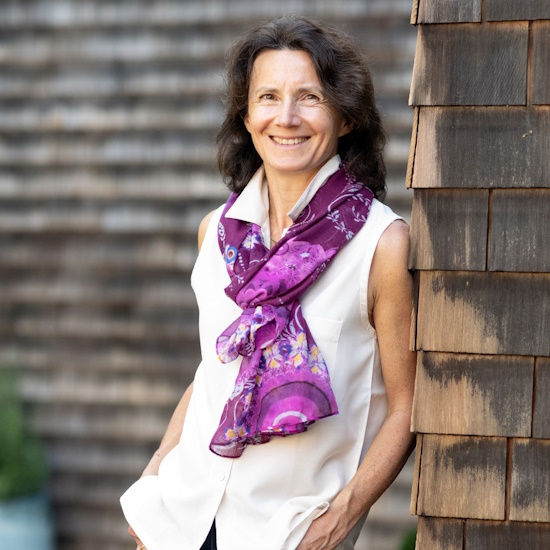
Professor Nathalie Palanque-Delabrouille, Lawrence Berkeley National Laboratory, USA

Professor Nathalie Palanque-Delabrouille, Lawrence Berkeley National Laboratory, USANathalie Palanque-Delabrouille is an experimental cosmologist. She spent most of her career at CEA-Saclay (France), where she contributed to several experiments. Her work spanned the EROS project, which sought to identify galactic dark matter in the form of compact objects using microlensing techniques, the SNLS experiment to investigate dark energy with Type Ia supernovae, and more recently, her engagement with BOSS, eBOSS, and DESI to explore large-scale structures to constrain dark energy and primordial inflation. Since 2018, she has been co-spokesperson for the DESI collaboration. In 2021, she moved to Lawrence Berkeley National Lab where she is since the director of the Physics Division. Recognized for her scientific contributions, she received several prestigious awards among which the 2017 Irene Joliot-Curie award for Woman Scientist of the year, the Knight of the French Legion of Honor in 2018, and was elected to the French Academy of Sciences in 2020. |
| 16:00-16:15 |
Discussion
|
| 16:15-17:00 |
Panel discussion
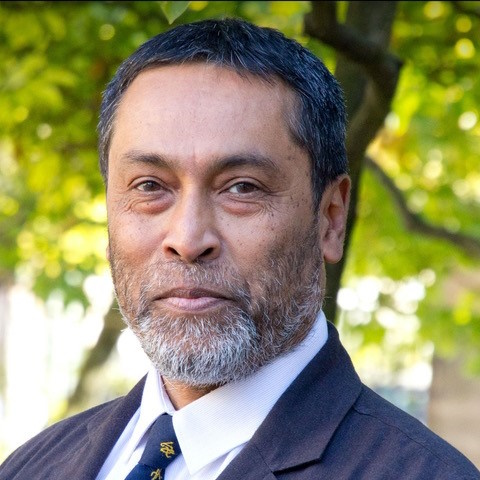
Professor Subir Sarkar, University of Oxford, UK

Professor Subir Sarkar, University of Oxford, UKSubir Sarkar was born and educated in India. He was an undergraduate at the Indian Institute of Technology, Kharagpur and obtained his PhD (1982) at the Tata Institute of Fundamental Research, Mumbai, where he was also a staff member. Since 1990 he has been at the Rudolf Peierls Centre for Theoretical Physics at the University of Oxford and was head of its Particle Theory Group (2011-19). He has held visiting positions at CERN, Geneva, Niels Bohr Institute, Copenhagen and Raman Research Institute, Bangalore, amongst others. His research interests are focussed at the interface of fundamental physics and cosmology; he is both a theorist and participates in experiments like the IceCube Neutrino Observatory, Cherenkov Telescope Array, and Legacy Survey of Space & Time on the Rubin Telescope. He was awarded the IUPAP-TIFR Homi Bhabha Medal and Prize (2017) for “distinguished contributions in the field of high energy cosmic ray physics & astro-particle physics”. 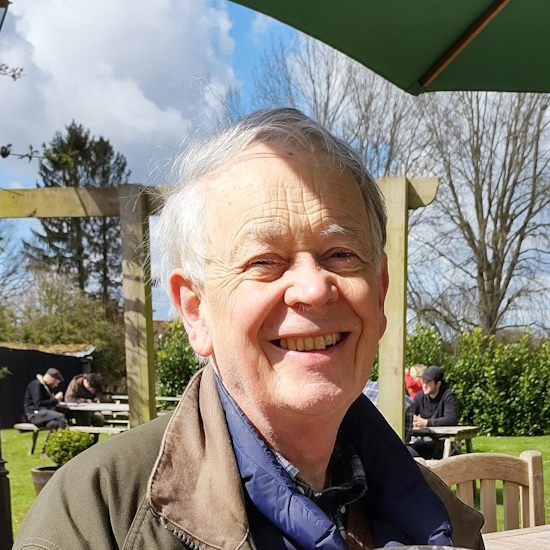
Professor James Binney FRS, University of Oxford, UK

Professor James Binney FRS, University of Oxford, UKJames Binney has a BA from Cambridge University and a DPhil degree from Oxford University. During 1971-2 he studied at the Albert Ludwigs Univiersitat, Freiburg i. Breisgau. From 1975-1979 he was a Fellow by Examination of Magdalen College, Oxford, and he spent the years 1975-6 and 1979-1980 in Princeton University before joining the Oxford Physics Faculty in 1981. From July 1996 to March 2018 he was Professor of Physics at Oxford University and a Professorial Fellow of Merton College. From 2010-2015 he was the Head of Oxford's Rudolf Peierls Centre for Theoretical Physics. In 2000 he was elected a Fellow of the Royal Society of London and a Fellow of the Institute of Physics. In 2022 he was elected an International Member of the US National Academy of Sciences. The Institute of Physics awarded him the 1986 Maxwell Medal and prize, the 2010 Dirac Medal and prize, and the 2023 Isaac Newton Medal and prize. He also received the 2003 Dirk Brouwer Award of the American Astronomical Society and the 2013 Eddington Medal of the Royal Astronomical Society, the 2013 Medaille de l'Institut d'Astrophysique de Paris and the 2015 Occhialini Medal from the Italian Physical Society. During 1994-7 he was President of both Commission 33 and Division VII of the International Astronomical Union. He has spent sabbatical terms at Caltech, The University of Arizona, Princeton University and the Australian National University. He gave the 2010 Vainu-Bappu Lecture at the Indian Institute of Astrophysics. During 2011 he was the Oort Professor at Leiden University and in 2014 he gave the Dennis Sciama Memorial Lectures in Oxford and Trieste. He has co-authored graduate-level texts on both galaxies and the theory of critical phenomena and an undergraduate text on quantum mechanics. His research concerns the structure, dynamics and formation of galaxies. 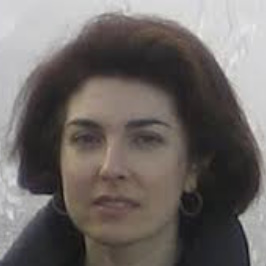
Dr Roya Mohayaee, Institut d'Astrophysique de Paris, France

Dr Roya Mohayaee, Institut d'Astrophysique de Paris, FranceRoya Mohayaee is a professor of astrophysics at Sorbonne Université. She has obtained her PhD from Imperial College, London in Theoretical Physics and works in the domain of astrophysics, mathematical modelling of dynamics of the Universe, early Universe, dark matter and dark energy. 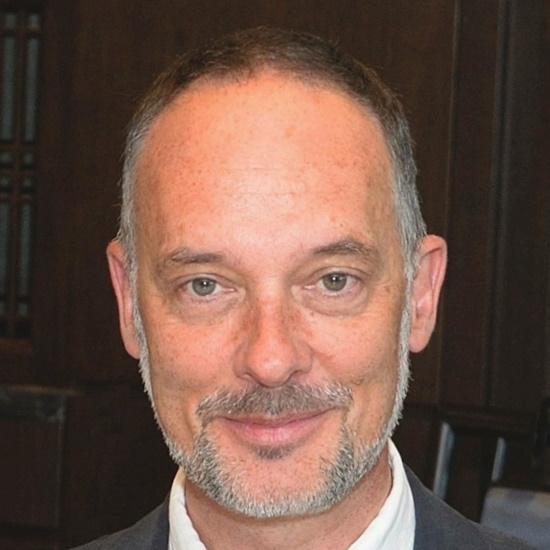
Professor John Peacock FRS, University of Edinburgh, UK

Professor John Peacock FRS, University of Edinburgh, UKJohn Peacock is a well-known cosmologist, with research interests at the interface between theory and observation. He has spent most of his career at the Royal Observatory Edinburgh and at the University of Edinburgh, where he was Head of Astronomy from 2007 to 2013. He has written extensively on statistical methods for studying cosmological density fields, including developing the widely-used Halo Model. He was UK Chairman of the 2dF Galaxy Redshift Survey (1999-2005). He is the author of Cosmological Physics, a highly successful postgraduate textbook. Between 2015 and 2021, his work was supported by an Advanced Grant from the European Research Council. Major awards for his research include election as a Fellow of the Royal Society (2007); the Shaw Prize in Astronomy (2014); the Gold Medal of the Royal Astronomical Society (2023). 
Dr Ruth Durrer, University of Geneva, Switzerland

Dr Ruth Durrer, University of Geneva, SwitzerlandRuth Durrer is head of the Department of Theoretical Pysics at Geneva University. Her research covers different areas in cosmology: inflation and the early universe, the cosmic microwave background, cosmological magnetic fields, gravitational waves and dark energy. She has obtained her PhD from Zurich University in 1988 and spent her post-doc years in Cambridge (UK) and Princeton (USA). Since 1995 she is full professor at the University of Geneva. 
Professor Pedro Ferreira, University of Oxford, UK

Professor Pedro Ferreira, University of Oxford, UKPedro G Ferreira is a Professor of Astrophysics in the Physics Department of the University of Oxford and a Director of the Beecroft Institute of Particle Astrophysics and Cosmology. His main field of expertise is cosmology, in particular the early universe and the large scale structure of the universe with a focus on trying to extract information about fundamental physics from these data sets. This has led him to explore how one might test and constrain General Relativity on large scales. Recently he has become interested in black holes, gravitational waves and, inevitably, he has also developed an interest in machine learning with a particular focus on methods for inferring physical laws or equations using symbolic regression. Professor Joseph Silk FRS, University of Oxford, UK, Institut Astrophysique de Paris, France and Johns Hopkins University, USA
Professor Joseph Silk FRS, University of Oxford, UK, Institut Astrophysique de Paris, France and Johns Hopkins University, USAThe Silk mass and the Silk–Rees–Ostriker fragmentation condition set basic elements of the physics of the formation of galaxies in the hot expanding Universe. The analyses by Joseph Silk and his group show how galaxy formation is related to the angular fluctuations in the temperature of the thermal cosmic background radiation, the intergalactic clouds of atomic hydrogen, and the plasma in rich clusters of galaxies. Stars are essential parts of galaxies; Joseph has been the leading advocate of the incorporation of empirical knowledge of star formation into cosmogony. These systematic studies by Joseph have played an important part in bringing us to our present tightly constrained picture of how galaxies formed. Professor John Ellis CBE FRS, King’s College London, UK
Professor John Ellis CBE FRS, King’s College London, UKJohn Ellis currently holds the Clerk Maxwell Professorship of Theoretical Physics at King's College in London. After obtaining a PhD from Cambridge University and post-doctoral positions at SLAC and Caltech, from 1973 to 2011 he worked at CERN (Geneva). His researches on phenomenological aspects of elementary particle physics and its connections with astrophysics, cosmology and quantum gravity. Much of his work relates directly to experiment: interpreting results of searches for new particles and exploring the physics that could be done with future accelerators. A proposal he made in 1976 led to the discovery of the gluon in 1979, and he was one of the first to study how the Higgs boson could be produced and discovered. He is currently active in efforts to understand the Higgs particle discovered recently at CERN, and exploring extensions of the Standard Model such as supersymmetry and other possible new physics such as dark matter. |
